Two dream spec e-bikes from one of the most aspirational brands in the business – but which should you choose? We get under the hood of these two hard-charging e-bikes to bring you the bottom line on performance.
Santa Cruz caused quite the stir when it moved away from its traditional VPP suspension layout with the Vala in 2024, then quickly doubled down on that decision with the big-hitting Bullit launch just a few months later. Now that the initial surprise has subsided from this very public direction change, our attention has turned to which of these two bikes makes the most sense as a purchase. Given that both share almost identical geometry and sizing, very similar travel, and the same motor and battery and wheel configuration, the answer is not as obvious as it might seem.
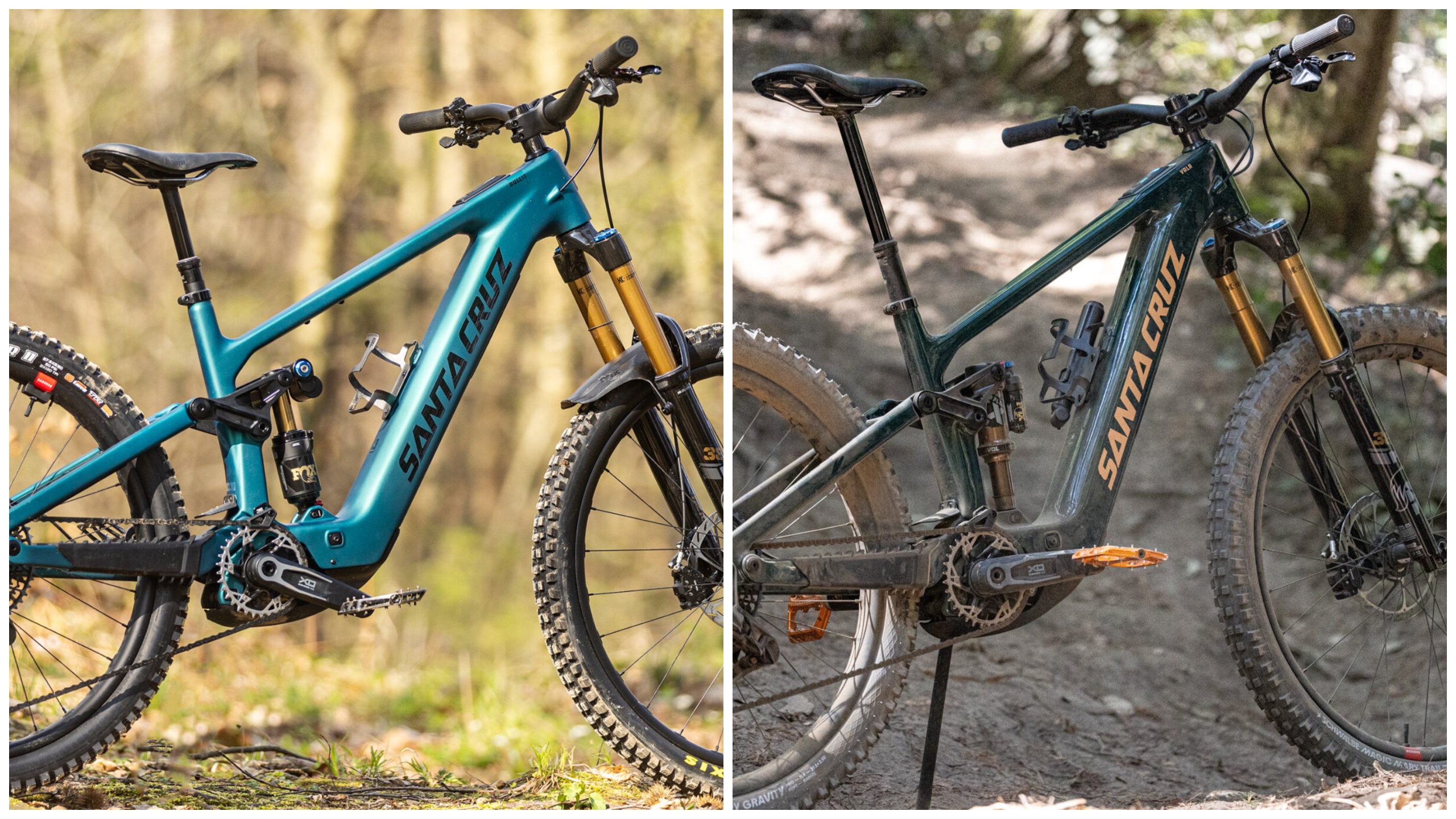
The Santa Cruz Bullit vs the Santa Cruz Vala: Both top end e-bikes, but which should you choose?
Motor and battery
Bosch provides the latest version 5 Performance CX motor for the Vala and the Bullit. This power unit, launched last year, came with numerous improvements to power, weight, noise and sensor tech, making it one of the smartest and smoothest motors on the market, with a complete absence of the annoying rattle found on previous generations. Since the initial launch, Bosch has also pumped up the power and torque on the CX motor to a healthy 750W peak power and 100Nm torque, with up to 400% support from the motor. Both the Vala and the Bullit benefit from these upgrades, and even current owners can update their systems to tap into the extra grunt.
Supplying energy to the motor is a 600Wh battery housed inside the down tube of the Bullit and the Vala. It’s not possible to remove the battery for charging, but this helps keep the weight down, the strength up, and the helps reduce the dimensions of the down tube. Longer rides can be facilitated with the addition of Bosch’s 250Wh PowerMore range extender mounted to the down tube. This adds over 40% extra range while ensuring that you don’t end up slogging around with more battery than you actually need and keeps the system weight down to about 5.8kg.
In testing I got 1,100m of climbing on both bikes with around 15% battery left using only eMTB+ mode. That should equate to around 1,300m in eMTB+ for a 80kg rider. Sadly Bosch’s system doesn’t support fast charging, so an hour’s lunch stop will probably only gain you 25% extra ride time. That’s compared to our range test of the Bosch CX on the Whyte Kado where we racked up 1,600m in Turbo with the 800Wh battery.
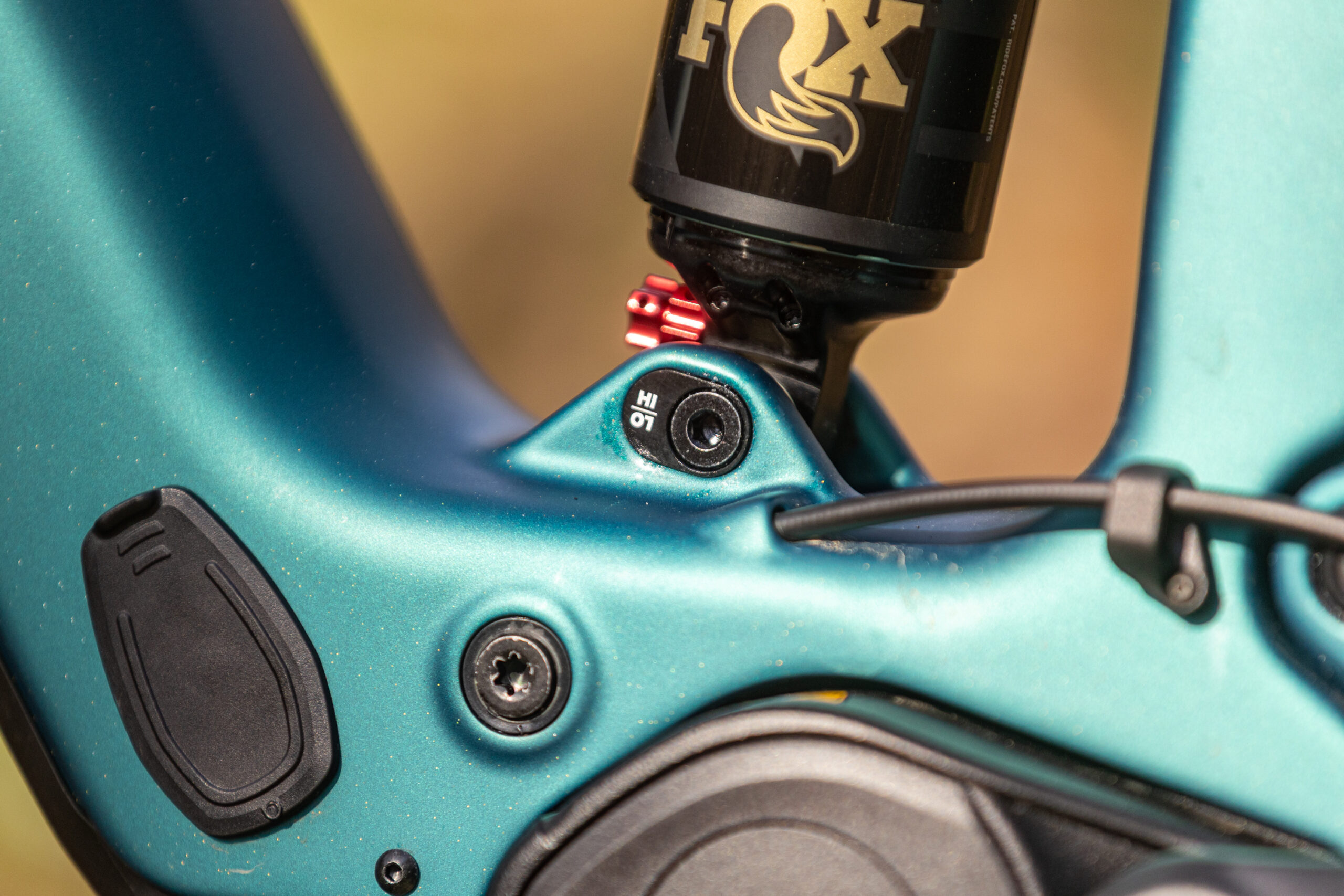
The lower shock mount sits in front of the seat tube on the Bullit.
Frame
Santa Cruz has long offered two layups for its carbon frames, labelled C and CC. CC uses stronger fibres, so less material can be used in the frame construction, saving weight. And it’s no different with the Bullit and the Vala, where both models can be purchased in either format. Additionally, Santa Cruz also offers the Vala in an alloy frame version that brings the price down to under £5k for a complete bike. For our comparison, Santa Cruz sent the Bullit CC and the Vala C.

While it’s moulded to the base of the seat tube on the Vala.
If at first glance the two frames seem identical, they are actually unique. Visually, the best way to tell them apart is that the Vala has a lower shock mount that attaches directly to the base of the seat tube and the top of the motor mount. This gives the Vala a slightly less pronounced belly compared to the Bullit.
However, both frames share a very similar overall look, as well as flip chips for both geometry and linkage progression. There’s comprehensive rubber frame protection, a down tube pad for shuttles, water bottle mounts and internal tube-in-tube cable routing with specific entry ports on the head tube. Santa Cruz offers both frames with a lifetime warranty as well as lifetime replacement bearings for the original owner.
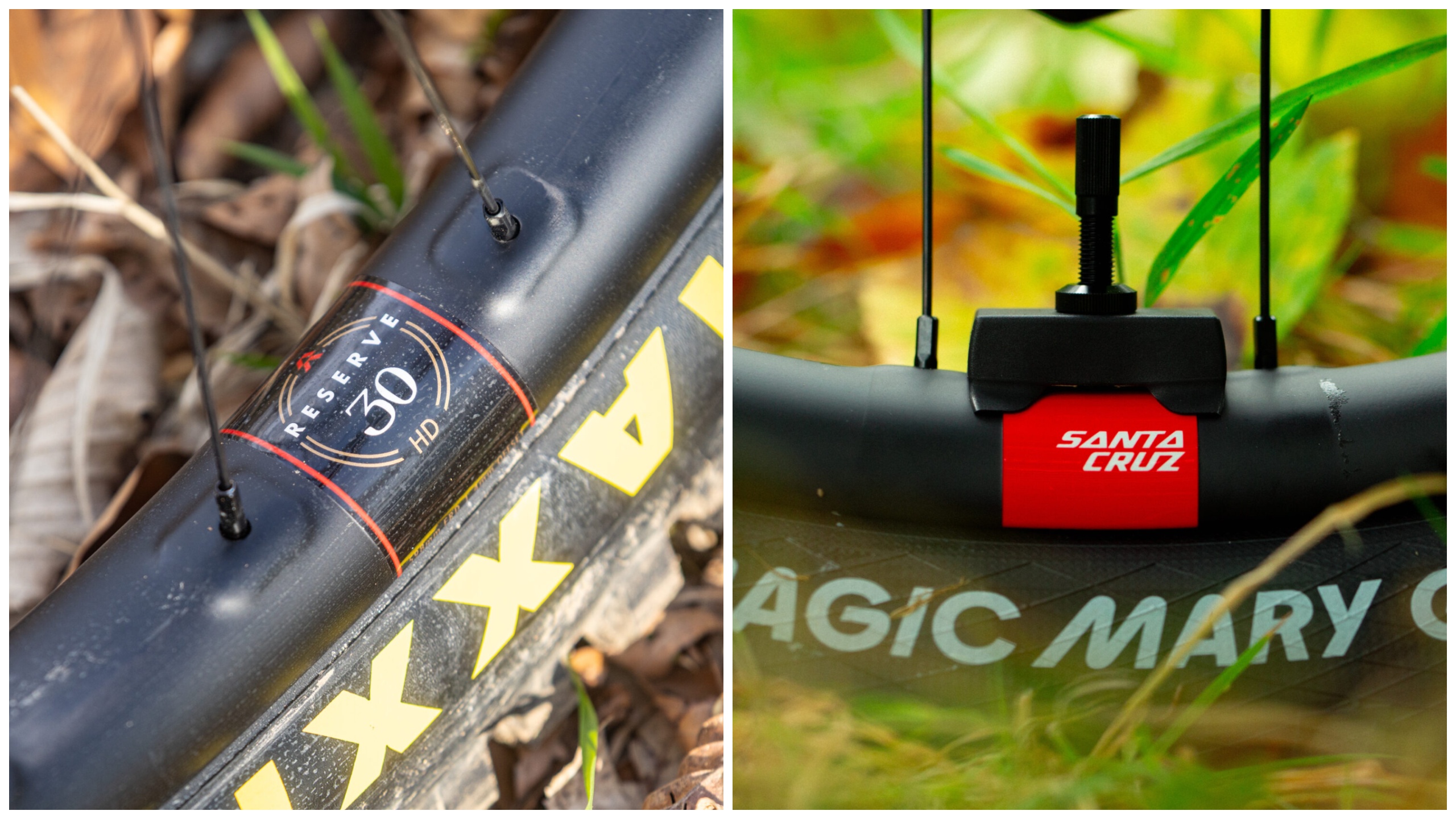
Carbon Reserve wheels with Maxxis reinforced Double Down tyres play against fast-rolling Schwalbe Radial rubber on the Vala.
Weight
Surprisingly, at 21.9kg the Bullit actually weighed 60g less than the Vala on my scales. And I weighed them several times to make sure it wasn’t a mistake. But dig into the details and it starts to make more sense. The Bullit is a more expensive build than the Vala, and comes with the lighter CC frame. It also boasts carbon wheels and a carbon bar. So the only extra weight on the Bullit comes from the shock and the reinforced casing tyres. For reference the Bullit comes with Maxxis Assegai/Minion DHR 2 tyres in Double Down casing front and rear, while the Vala has Schwalbe Magic Mary Radials with an enduro casing up front and gravity casing rear.
Weighing the wheels alone showed that the Bullit only gave up 10g to the Vala despite having much heavier duty tyres.
Geometry
Santa Cruz lists the geometry for both the Bullit and the Vala across all five frame sizes, but as always, I didn’t rely on that data. Instead I measured both bikes in the workshop to give some actual figures. And I repeated most of the measurements in in both the high and low flip-chip positions. You can see the results of that exercise below in the table, but I’m also going to run through the main differences.
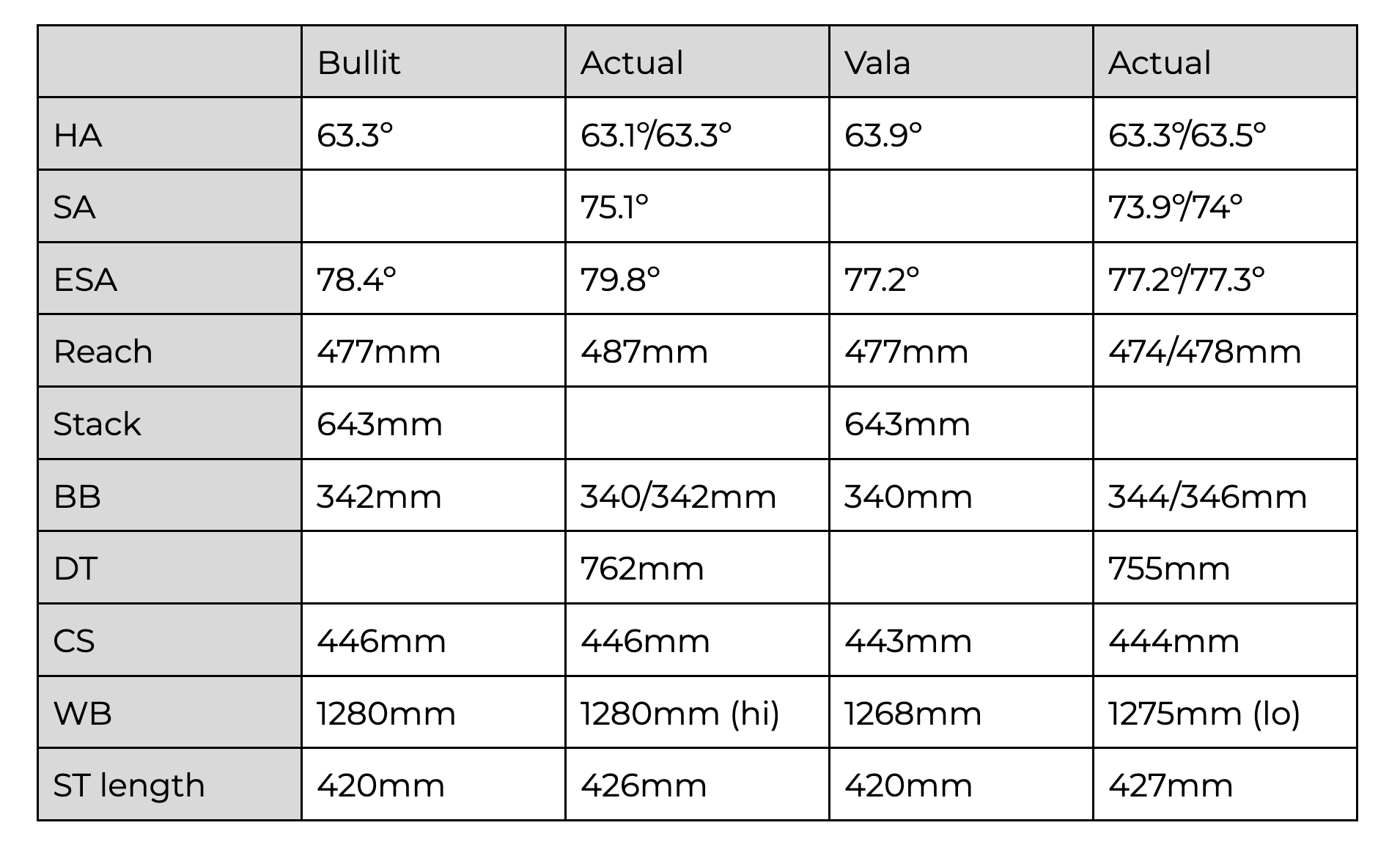
Santa Cruz Vala Vs. Bullit geometry chart
You’ll notice I’ve also added Santa Cruz’s published figures so you can compare the actual and claimed numbers. Looking at the head angles, both bikes are incredibly similar with only 0.2º difference despite one being an all-out mini-DH e-bike and the other being aimed more at ‘trail’ riding, in inverted commas. The Bullit gets a steeper seat angle, which makes sense given that it’s more of a winch and plummet machine, although neither bike could be considered having a slack seat angle. Moving on to the reach, and this is the biggest discrepancy with the published figures, as well as one of the main differences between the two bikes. I measured a 487mm reach on the large Bullit in the high position compared to 478mm for the Vala. That’s 11mm longer than claimed. Drop the Bullit into the low position and I estimate the reach will shorten to around 483mm. Both bikes share the same stack measurement, but the Bullit has a 10mm shorter head tube and a 10mm taller fork than the Vala. Despite having 10mm more rear wheel travel, the Bullit sits closer to the ground, with a 4mm lower BB height, and while both bikes get proportional chainstays, the rear centre is longer on the large Bullit by 2mm.
In a nutshell, the Bullit is bigger and lower than the Vala, although not really any slacker. In fact I was surprised just how close the static geometry is on the two bikes.
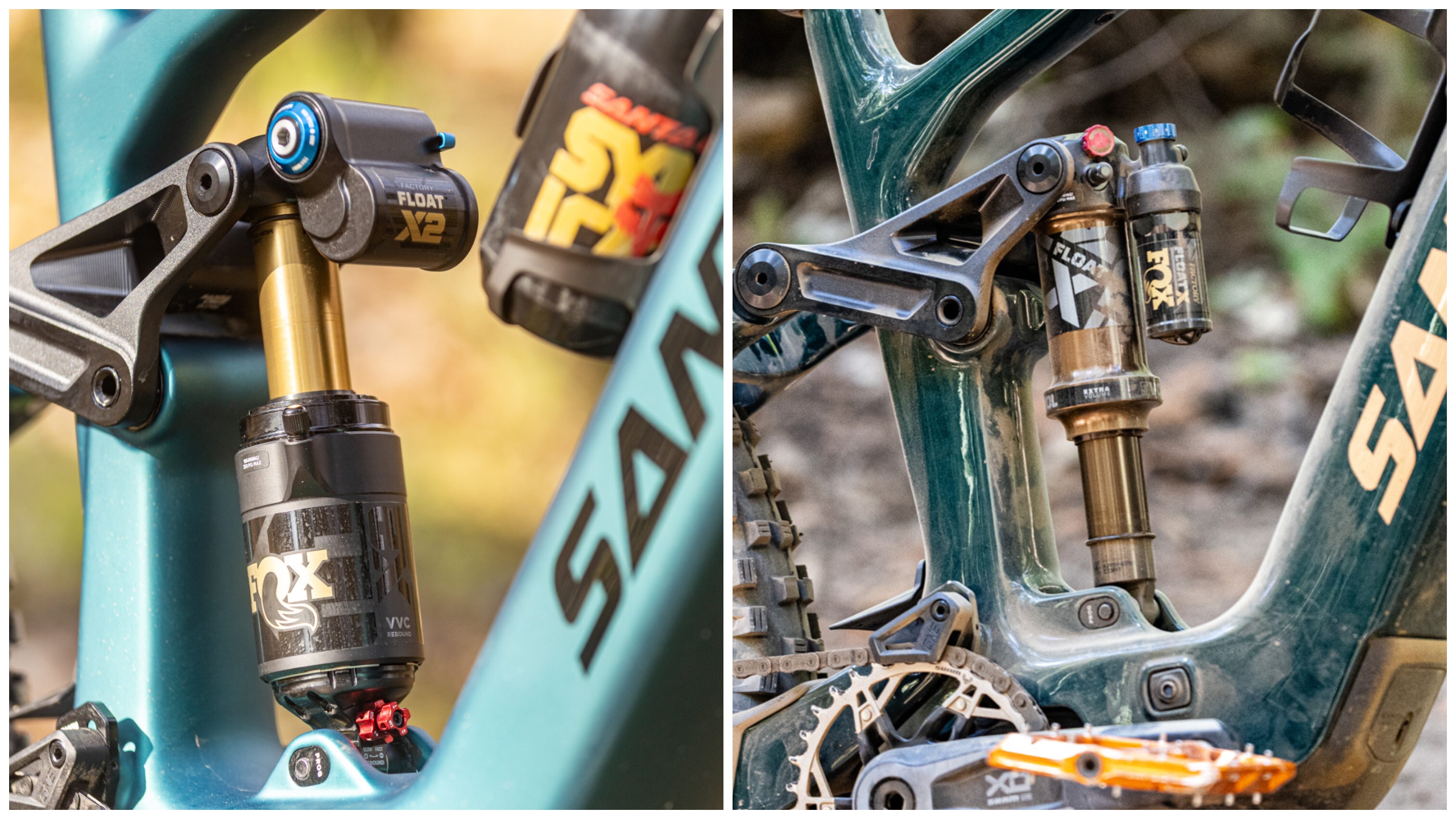
The Float X2 on the Bullit has longer stroke, more adjustability, and a bigger oil volume than the Float X on the Vala. Note our test bike was the Vala C GX AXS with the Performance Elite, rather than Factory, shock.
Suspension
Let’s start with the travel. The Bullit is a 170mm bike with a 170mm fork, while the Vala uses a 160mm fork paired with 150mm travel out back. Why didn’t Santa Cruz give the Bullit a 180mm fork? My best guess is that it always intended to fit Fox’s inverted Podium fork, but currently Fox only makes it with maximum 170mm travel. Both bikes get the Fox 38 with four-way adjustable Grip X2 damper, but the Bullit has the Factory version with Kashima upper tubes, while this model of Vala makes do with the black Performance Elite stanchions. Inside the forks I found 4 tokens on the Vala and 3 tokens on the Bullit. More on this later.
To achieve those rear wheel travel numbers, the Bullit uses a 205x65mm shock, while the Vala uses a 205x60mm. At the back of the Bullit is the new pressure-balanced, mono-tube Float X2, while the Vala gets the lighter, less sophisticated Float X. High and low-speed compression and rebound is adjustable on the Bullit, while only low-speed rebound and low-speed compression can be controlled on the Vala. Inside the Float X2 are 2x2cc volume spacers, while the Float X has a 0.4in volume spacer.
I measured the travel on both bikes, and the Bullit was spot on with 170mm and the Vala was only 1mm shy with 149mm.
Santa Cruz offers a decent suspension calculator on its website, where you input your weight and select your bike and it gives detailed suggested settings. This is a great feature and a decent starting point, but it is just a starting point, and there are a couple of areas of ambiguity to the process. Firstly is doesn’t tell you whether your weight should be kitted up or in your birthday suit. Secondly, like most e-bikes, the Bullit and the Vala sag a little under their own weight, so the fork pressure reduces by about 4psi if you fully extend the fork. It doesn’t say whether to inflate the fork to the recommended pressure with the fork sagged or fully extended. Nor does it say how many tokens are in the fork and how many to fit.
This is something that took a while to dial in, and I actually used a Motion Instruments data logger on the forks to get them set-up. Out of the box, I found the recommended pressures too high, and I struggled to get anywhere near full travel with the tokens installed – that was with 20% dynamic sag. Removing most of the tokens opened up the full travel on both bikes without affecting the dynamic sag. I ended up running 1 token in each fork, with 95psi in the fork on the Vala and 88 psi in the fork on the Bullit.
At the back, I added a 2cc volume spacer to the Bullit, bringing the total volume spacers up to 6cc, because I was achieving full travel quite easily with the correct sag. It’s worth pointing out that I set the sag with all of my weight seated and the saddle slammed, rather than in the ‘attack’ position. Shock pressure on the Bullit ended up at 194psi, while I ran the Vala at 184psi. I weigh 75kg in my undercrackers. Remarkably, these are exactly the pressures recommended by Santa Cruz.

Mick Kirkman rides the 2025 Santa Cruz Bullit e-bike at the press launch in Slovenia.
Ride and handling
Let’s get down to brass tacks. If you want the bottom line, then despite very similar geometry, and almost identical weight, the Bullit is still the number one choice for hitting nasty, chopped up downhill tracks and big jumps in the bike park. I know what you’re thinking; you’ve read all this way for that?! And I sympathise, since I’m the one that spent the most time getting there! But along the way I got both bikes feeling really similar and also got to the bottom of why they diverge again on the gnarliest terrain. Firstly let me get a few general points out of the way. The Bullit feels like the bigger bike. It was obvious every time I swapped back due to the longer reach and extended wheelbase. And this contributed to the additional composure that the Bullit exhibited at high speeds and when hitting big bumps and deep compressions.
On the other hand, the Vala has more pop, feels more agile, and significantly more rewarding on a wider variety of trails. When the gradient isn’t in double figures and the trails are smooth and flowing, the Vala is more involving to ride, easier to throw around, and generally feels more fun. The shock has less damping and there’s less travel to pull through, so it gets off the ground with less effort. And the Schwalbe Radial tyres are extremely supple verging on bouncy, with a lot less damping to the sidewalls than the Maxxis Double Downs on the Bullit. They also roll faster than the Maxxis tyres, so the pace comes more easily to the Vala when gravity has less of an influence.
I can’t overstate the difference the tyres make. When I swapped the wheels on the two bikes, the two bikes really converged. The Bullit became much more dynamic on mellow descents, and carried more speed with less effort. So if you have a Bullit and want to make it less gravity-orientated, swapping the tyres will go a long way to making it feel like a Vala. Likewise, Vala owners can get more grip and confidence on steep, rough tracks with a switch to sticky, reinforced rubber.
Take the wheels and tyres out of the equation and the differences are more subtle, but they can still be felt. At Golfie I ran the Bullit wheels on both bikes and rode them back-to-back on the same tracks. Here, the Vala had a wild side, feeling closer to the edge of comfort while the Bullit remained calm and unfazed. Of course some of that is down to the extra travel, but mostly I felt the stability came from the extra length in the wheelbase, the lower dynamic BB height, and the greater damping control of the Float X2 shock. The Bullit felt more planted and settled after g-outs and compressions with less bouncing. That same composure that makes it feel a bit boring at low speeds on mellow trails gives the rider additional confidence and control when the terrain notches up.
Verdict
Choosing the right e-bike between the Bullit and the Vala comes down to deciding what to prioritise. If you mostly ride fairly smooth trails on rolling gradients and occasionally head to the mountains or a bike park, then the Vala will be more exciting and more rewarding 90% of the time. But if you only really winch and plummet enduro trails then the Bullit is the best e-bike for you. Of course both bikes can cover all bases, but these are their natural habitats. Whichever bike you choose, enjoy it! They’re great e-bikes and you’re in a very fortunate position!



